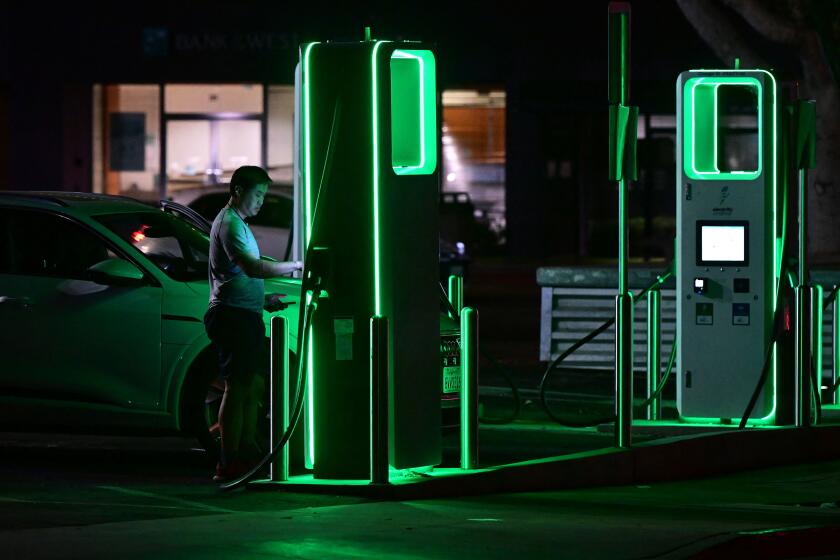L.A.-area EV maker Fisker cuts 15% of staff as it runs low on funds

Fisker Inc. plans to cut 15% of its workforce as the electric-vehicle maker faces “substantial doubt” about its ability to continue operating if it can’t secure new financing.
The Manhattan Beach company’s chief executive, Henrik Fisker, said Thursday he’s in talks with another automaker for an investment lifeline.
“It’s narrowed down to one large carmaker, and I hope we can close this deal soon,” Fisker said in an interview, declining to name the other party involved.
The head count reduction largely affects sales staff and comes as Fisker said in a statement that its current capital may not be enough to sustain it over the next 12 months without additional funds. It reported cash and equivalents of $325.5 million as of Dec. 31, well below a $502.3 million average analyst estimates compiled by Bloomberg.
Fisker estimates it has about $500 million split between its vehicle and parts inventories, with current sales generating more cash, the CEO said.
California electric vehicle sales dropped significantly in the last half of 2023, raising questions about the state’s ability to phase out gas-powered cars.
The disclosures are the latest setback for a company that has struggled with production issues, technical glitches and criticism from short sellers. EV makers of all sizes are also grappling with an industrywide slowdown in sales growth as consumer demand wanes.
Fisker recorded $200.1 million in fourth-quarter sales, short of analyst estimates for $272.9 million.
The company projected deliveries of 20,000 to 22,000 EVs this year. It delivered 4,929 for all of 2023.
Fisker’s shares tumbled 33% in after-market trading to about 49 cents. They fell 76% last year and trade well below their 2021 peak.
More to Read
Inside the business of entertainment
The Wide Shot brings you news, analysis and insights on everything from streaming wars to production — and what it all means for the future.
You may occasionally receive promotional content from the Los Angeles Times.











